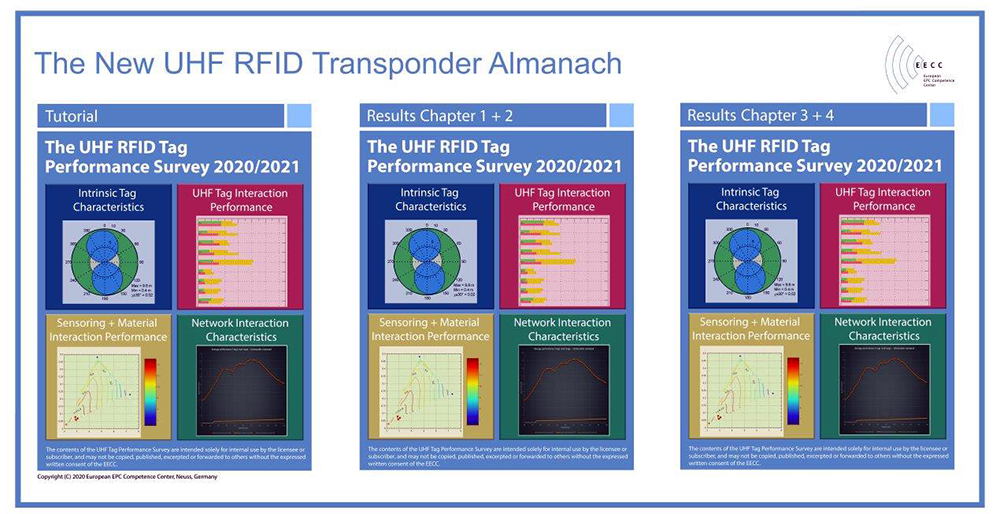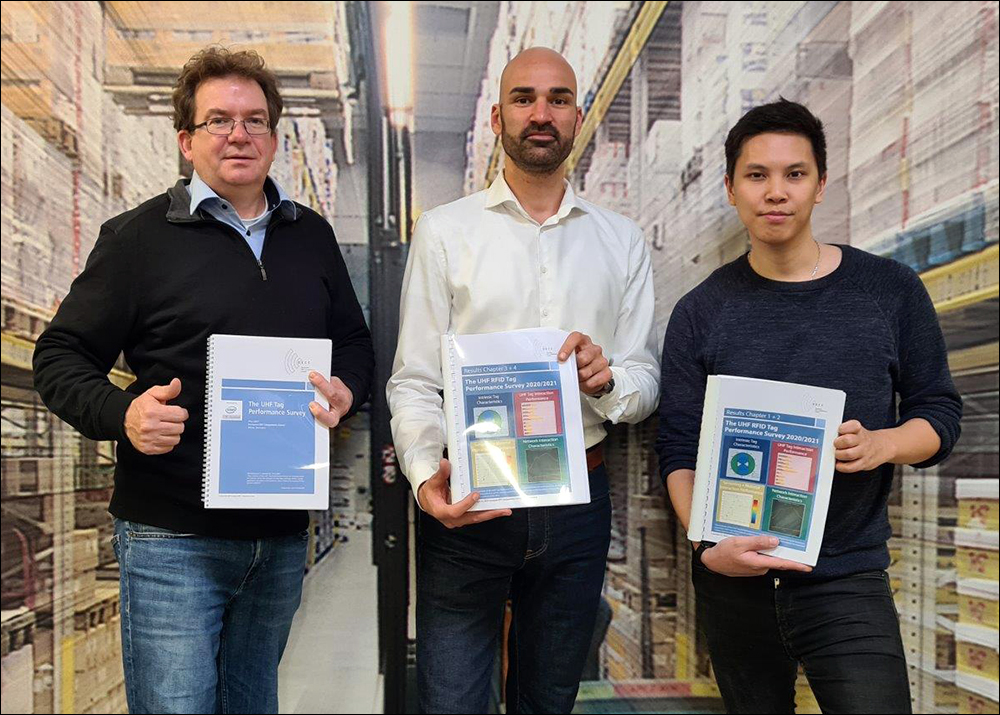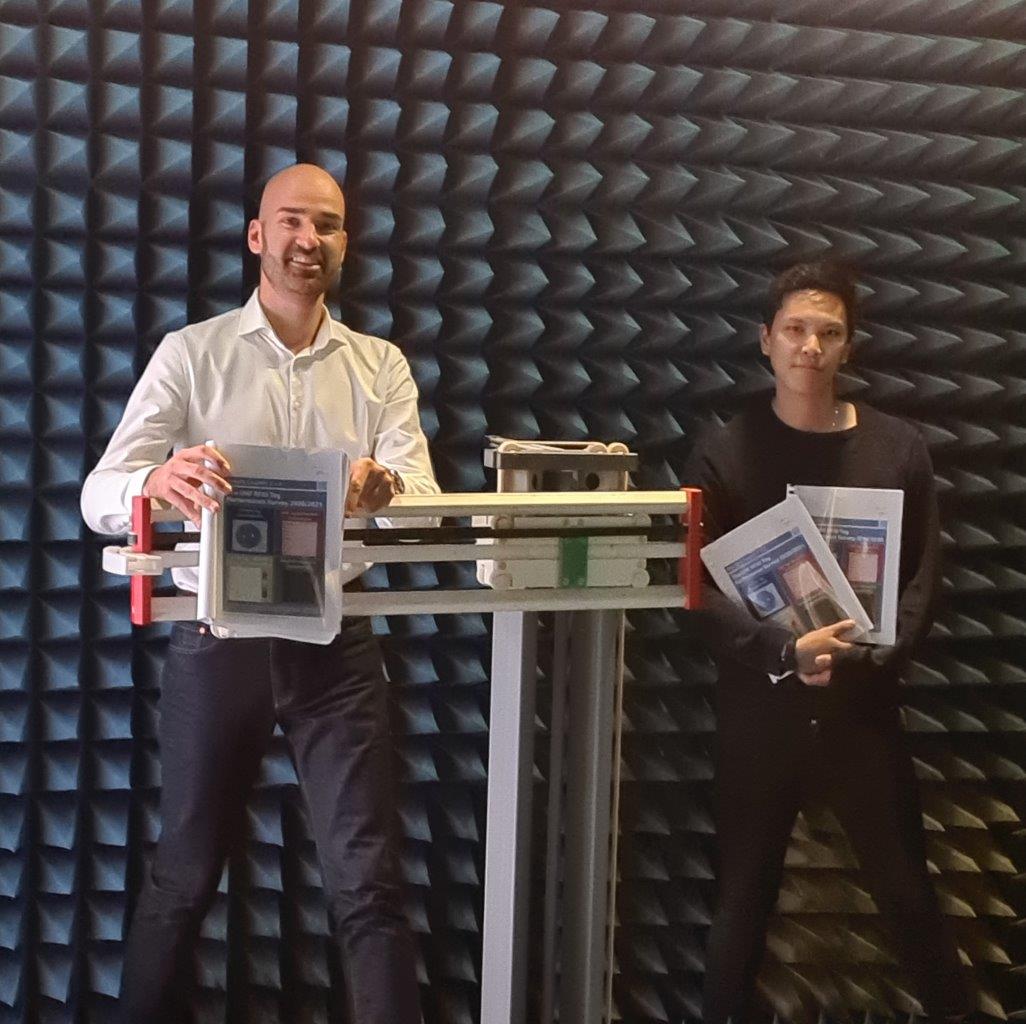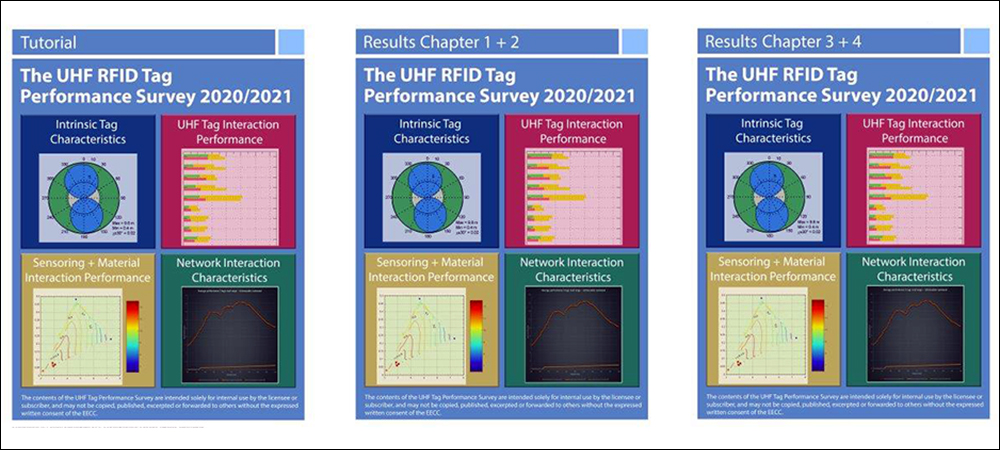The European EPC Competence Center (EECC) has released its 2020 “UHF Tag Performance Study” (UTPS), covering approximately 10 percent more products than were tested the year before, as the RFID market continues to grow. This is the 14th year that the EECC has conducted its testing to determine performance and applications for the latest UHF RFID tags. The survey is intended to serve as a global benchmark for RFID transponder testing and, more recently, for certification.
The EECC was launched in 2004 by GS1 Germany, Deutsche Post DHL and Metro Group to provide information required by RFID technology users as they select appropriate RFID tags. The organization began conducting its annual test in 2007 at its innovation lab in Neuss, Germany, initially evaluating the performance of 20 tags that were available at the time for such applications as tracking cartons and pallets of goods moving through the supply chain (see EECC Study Expands Structure to Test IoT-based RFID Tags). Since then, the use of passive RFID technology has diversified and expanded.

The EECC’s study serves as an almanac and compendium for RFID users.
The latest survey, which studied more than 500 tags from 45 manufacturers, took place throughout a full year starting in September 2019, though it was delayed by one month in April due to the COVID-19 quarantines. Researchers found this year that the technology is following a trajectory in which tags are becoming less expensive and higher in performance. However, says Conrad von Bonin, EECC’s CEO, there were a few noteworthy findings. “The market is growing,” he says. This year, the researchers found, “Many tags are included that perform well on a wide variety of different sub-surfaces.”
As high performance is becoming more standard, von Bonin reports, the qualities that make tags distinct from each other are centering more around size, form factor and price. “Some vendors have a very aggressive price strategy,” he states. “This is good for users and the [deployment] of RFID,” but other vendors will now need to respond with similarly priced products in order to remain competitive. The improved performance and smaller size are due, in part, to three new UHF chips that have been incorporated into some tags. These include CEITEC‘s CTC13002 IC, EM Microelectronic‘s em|echo-V, which combines UHF RFID with Near Field Communication (NFC), and Impinj‘s M750 for its Internet of Things (IoT) capabilities.

The European EPC Competence Center’s research team, left to right: Conrad von Bonin, Ramy Hagouan and Nam-Ahn Tram
Testing this year included 28 different measurements. Among them was evaluation of tag orientation, to test the performance of each transponder when interrogated at different angles. Write sensitivity was studied to evaluate the amount of energy required to encode a transponder, while write speed testing determined chip characteristics. An interrogation interference measurement applied to environments, such as a store containing multiple UHF RFID-based electronic article surveillance (EAS) gates placed in close proximity to each other. The researchers evaluated read sensitivity and determined the response of a tag to varying interrogation intensity, while the study also tested tags stacked near each other.
The survey included both standard UHF RFID tags and on-metal tags. The latter were tested for stability of performance in batches and evaluating variations that could occur during the process of bonding a chip to an antenna. The team also tested read ranges, based on the material to which the on-metal transponders were attached. Backscatter was tested as well for both standard and on-metal tags. Several new companies were among those that supplied tags for this year’s survey, including many from China. With its acquisition of Smartrac‘s labels, the group reports, Avery Dennison has become one of the major players.
In addition, the survey investigated the use of this year’s RFID tags with existing RFID readers. That has a practical purpose, von Bonin explains, since many users search for tags for their existing RFID hardware installations, when the original tags they used are no longer available. To provide guidance for such companies, the survey considered the sensitivity of readers similar to companies’ existing reader-antenna configurations or handhelds. With what von Bonin calls the material-dependent backlink-forward link matrix, “We can easily also enable the integration of tags that will be produced in the future.”
The survey found that current and future tags are likely to be compatible with existing RFID infrastructure, such as fixed and handheld readers. “This means that today’s applications become future-proofed,” von Bonin says. To make the growing amount of test data more digestible, the group focused this year on creating use-case categories. “As most of the companies that buy the UTPS must be specialists to understand the measurements, we added some more information to explain why and [how] we conducted the measurements, and how to read them.” He describes this year’s study as an almanac, predicting it can serve as “a standard compendium for RFID users.”

Ramy Hagouan and Nam-Ahn Tram in the UTPS team’s measuring chamber
Von Bonin says the group also discovered several trends in the latest survey. On the one hand, he notes, tags have become much more effective for a wide variety of applications, due to their reliable sensitivity across many different materials and environments. On the other hand, he adds, “We see much more specialized tags—for example, tuned for use on glass,” or bridging technologies like dual tags. Another continuing trend involves efforts around sustainability.
The survey tested the IoT capabilities of UHF RFID tags, including their ability to transfer sensor information that would enable IoT applications. The researchers found that a growing number of tags are offering sensor functionality, as well as simple transmission of an ID number. In the future, von Bonin predicts, IoT systems will foster hybrid solutions featuring UHF RFID and other technologies; in some cases, multiple technologies could be combined to provide a single solution. “I expect a lot of crossed-over tags,” he states, “as I assume that information about products and materials will be collected by all kind of sensors,” not just UHF RFID.
Although the COVID-19 pandemic has impacted the economy, von Bonin says, the growth of RFID has continued. The automotive industry and others are showing a new interest in RFID to bring more data to manufacturing processes, while preventing excess labor or the crowding of workers. On the other hand, aviation has seen a slowdown of RFID projects since the airline industry has been heavily impacted by the outbreak.
The current survey is available for sale at EECC’s website, and 2021’s survey is now being prepared. The annual survey included only the RFID tags provided by manufacturers that offered new or unique qualities, though for a fee, all tag manufacturers with products employing the 800 to 1,000 MHZ frequency range can have the EECC test their tags and certify them for specific applications.


